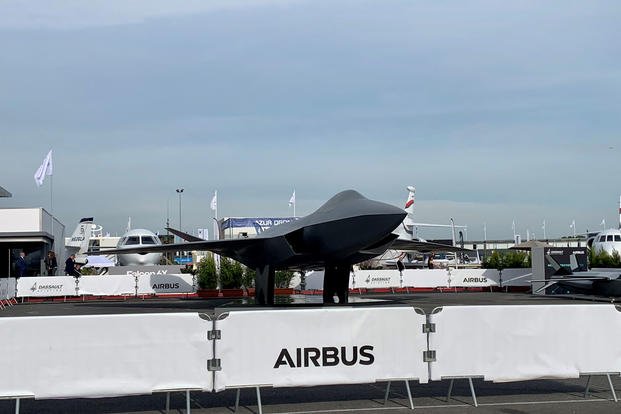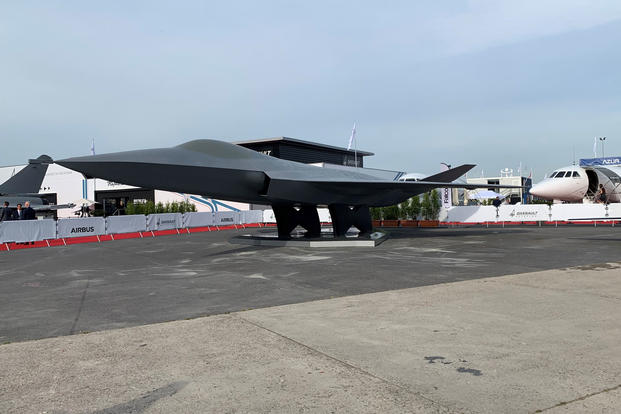SALON DU BOURGET, PARIS -- France made a splash at this year's Paris Air Show, unveiling a sixth-generation fighter design, the Future Combat Air System. The Dassault-made aircraft, which is set to be made in collaboration with Airbus and acquired by Spain and Germany as well as France, represents a renaissance in European aviation, French President Emmanuel Macron said.
The unveiling comes just a year after BAE Systems debuted a concept model for a future British 6th-generation fighter, the Tempest.
Is Europe now on a trajectory to beat the U.S. to acquisition of 6th-generation fighter technology?
"I would have to say no," Acting Air Force Secretary Matt Donovan said here Monday during the airshow.
Donovan and Dr. Will Roper, assistant secretary of the Air Force for acquisition, technology and logistics, both noted last year upon the unveiling of the Tempest fighter in the U.K. that, while competition is "a good thing," any fighter NATO partners and allies aim to produce in the future should be complementary to U.S. capabilities. They stressed the same message after France unveiled the Future Combat Air System.
"We're putting a lot of focus into our next-generation programs right now to make sure we're going to lead the way to sixth-generation systems," Roper said. Roper and Donovan said they have yet to have a full briefing about what Europe's latest fighters, including the United Kingdom's Tempest jet, look like beneath the surface design.
Related content:
"We would just like to cooperate and collaborate ... as well as to share technology, [which is] absolutely important for future interoperability if we're going to go to war as coalitions, which we always do, so that's really important," Donovan said.
Roper said it's not just about what a fighter can do, but also how it's made.
Discussions are ongoing within the Air Force about the need for a sixth-gen fighter, he said. Leveraging the use of "digital engineering," which sometimes allows the service to bypass the regular manufacturing process for parts, will give developers the ability to design and change blueprints with more flexibility, Roper said. The Air Force is currently using digital engineering for A-10 Warthogs, as well as the Ground Based Strategic Deterrent program, which is set to replace the Minuteman III intercontinental ballistic missile system.
"We [believe the] production technology may be the most game-changing component if it allows us to move into a different paradigm of doing rapid design spirals and updates," Roper told reporters here, adding that technology growth paired with digital engineering will allow for faster production of future aircraft. Roper said the Defense Department is used to outdated acquisition practices, out of step with what the pilot may need to outpace adversaries.
"In addition to looking at a lot of classified capabilities we want to give future warfighters, we also want to give manufacturers a different way of making that cutting-edge technology. Expect [that] for what we bring to the table for sixth-gen," he said.
"We're here to also ... connect with the future," Roper added. "Aviation is a booming business right now in Europe, so we're interested in seeing who the new movers and shakers are, engaging with some of the companies here in France, but also showing that some of the systems that we bring to bear from the U.S. are the best in the world, and we see a future where we maintain that edge far past our successors."
-- Oriana Pawlyk can be reached at oriana.pawlyk@military.com. Follow her on Twitter at @oriana0214.













